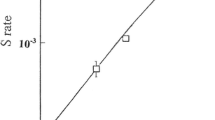Abstract
Variations in two general classes of diphtheria toxin-resistant mutants which may be selected from Chinese hamster ovary (CH0-K1) cells and the conditions for their selection are described. The resistance of class I mutants can be overcome with increasing concentrations of toxin. Their entire complement of EF-2 is susceptible to ADP-ribosylation by toxin. Class I includes those strains in which resistance resides at the level of the plasma membrane. The resistance of class II, translational, mutants cannot be overcome by high concentrations of toxin, as all, or a portion, of their EF-2 is insensitive to the action of diphtheria toxin and Pseudomonas exotoxin A. Adjustment of the concentration of toxin used to select resistant mutants can be used to regulate the class of mutant recovered. Metabolic cooperation between cells does not affect recovery of either class I or class II mutants. Resistance is stable in class I strains, but class IIb strains, which possess 50 % resistant and 50 % sensitive EF-2, display a transient high level of resistance which is retained for varying lengths of time following exposure to toxin. Class IIa strains, which possess 100% resistant EF-2, grow normally in saturating concentrations of toxin, but class IIb strains grow at a reduced rate. Evidence is presented which suggests that the gene for EF-2 is functionally diploid in CH0-K1 cells.
Similar content being viewed by others
Literature cited
Moehring, J.M., and Moehring, T.J. (1976).Infect. Immun. 13:221–228.
Moehring, T.J., and Moehring, J.M. (1977).Cell 11:447–454.
Gupta, R.S., and Siminovitch, L. (1978).Somat. Cell Genet. 4:553–571.
Gupta, R.S., and Siminovitch, L. (1978).Proc. Natl. Acad. Sci. U.S.A. 75:3337–3340.
Pappenheimer, A.M., Jr., and Gill, D.M. (1973).Science 182:353–358.
Collier, R.J. (1975).Bacterial. Rev. 39:54–85.
Iglewski, B.H., and Kabat, D. (1975).Proc. Natl. Acad. Sci. U.S.A. 72:2284–2288.
Baker, R.M., Brunette, D.M., Mankovitz, R., Thompson, L.H., Whitmore, G.F., Siminovitch, L., and Till, J.E. (1974).Cell 1:9–21.
Gill, D.M., and Dinius, L.L. (1973).J. Biol. Chem. 248:654–658.
Iglewski, B.H., Liu, P.V., and Kabat, D. (1977).Infect. Immun. 15:138–144.
Chung, D.W., and Collier, R.J. (1977).Infect. Immun. 16:832–841.
Pappenheimer, A.M., Jr. (1977).Annu. Rev. Biochem. 46:69–94.
Moehring, T.J., Danley, D.E., and Moehring, J.M. (1979).Somat. Cell Genet. 5:469–480.
Crerar, M.M., and Pearson, M.L. (1977).J. Mol. Biol. 112:331–342.
Author information
Authors and Affiliations
Rights and permissions
About this article
Cite this article
Moehring, J.M., Moehring, T.J. Characterization of the diphtheria toxin-resistance system in Chinese hamster ovary cells. Somat Cell Mol Genet 5, 453–468 (1979). https://doi.org/10.1007/BF01538880
Received:
Revised:
Issue Date:
DOI: https://doi.org/10.1007/BF01538880




